
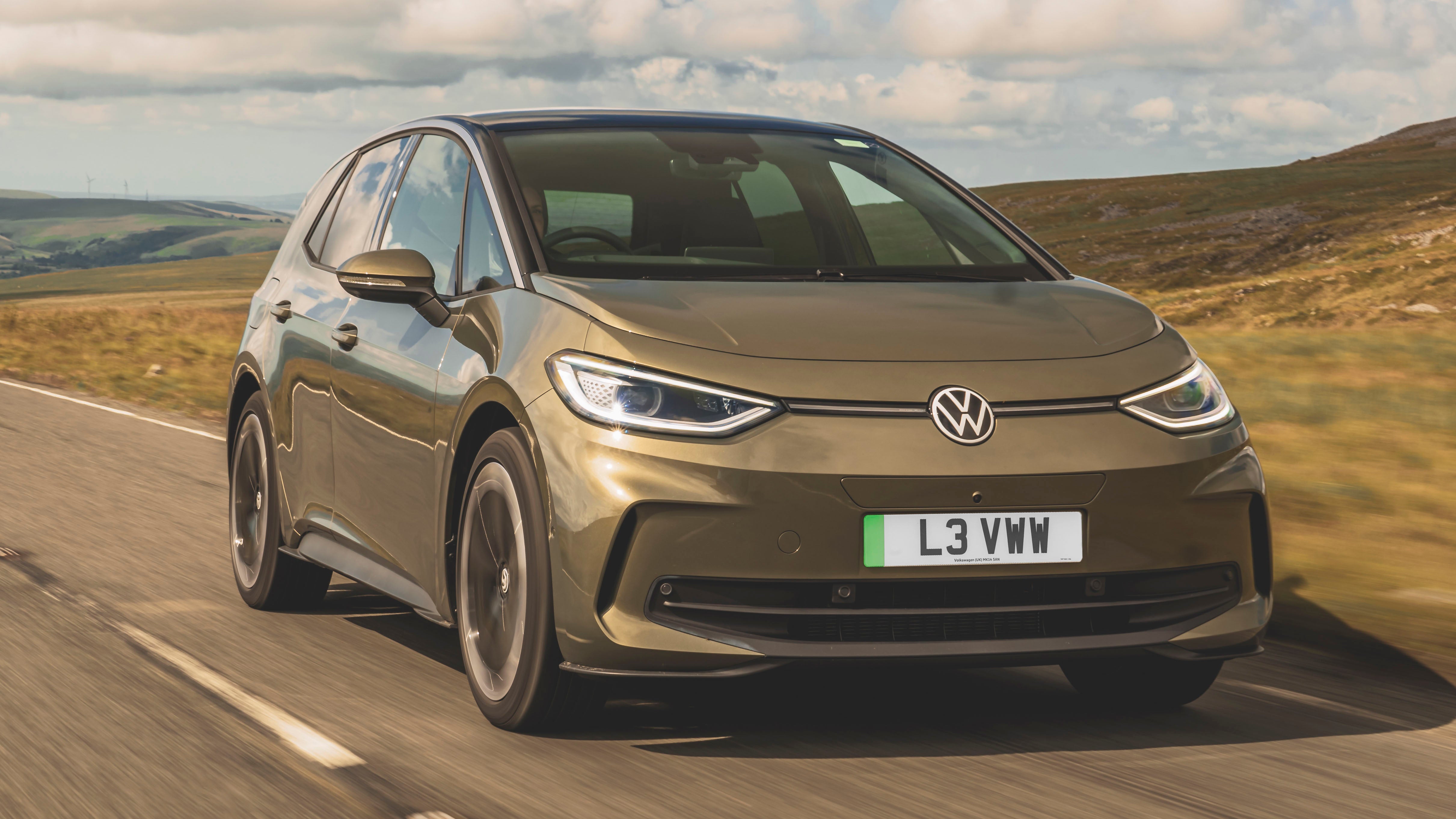
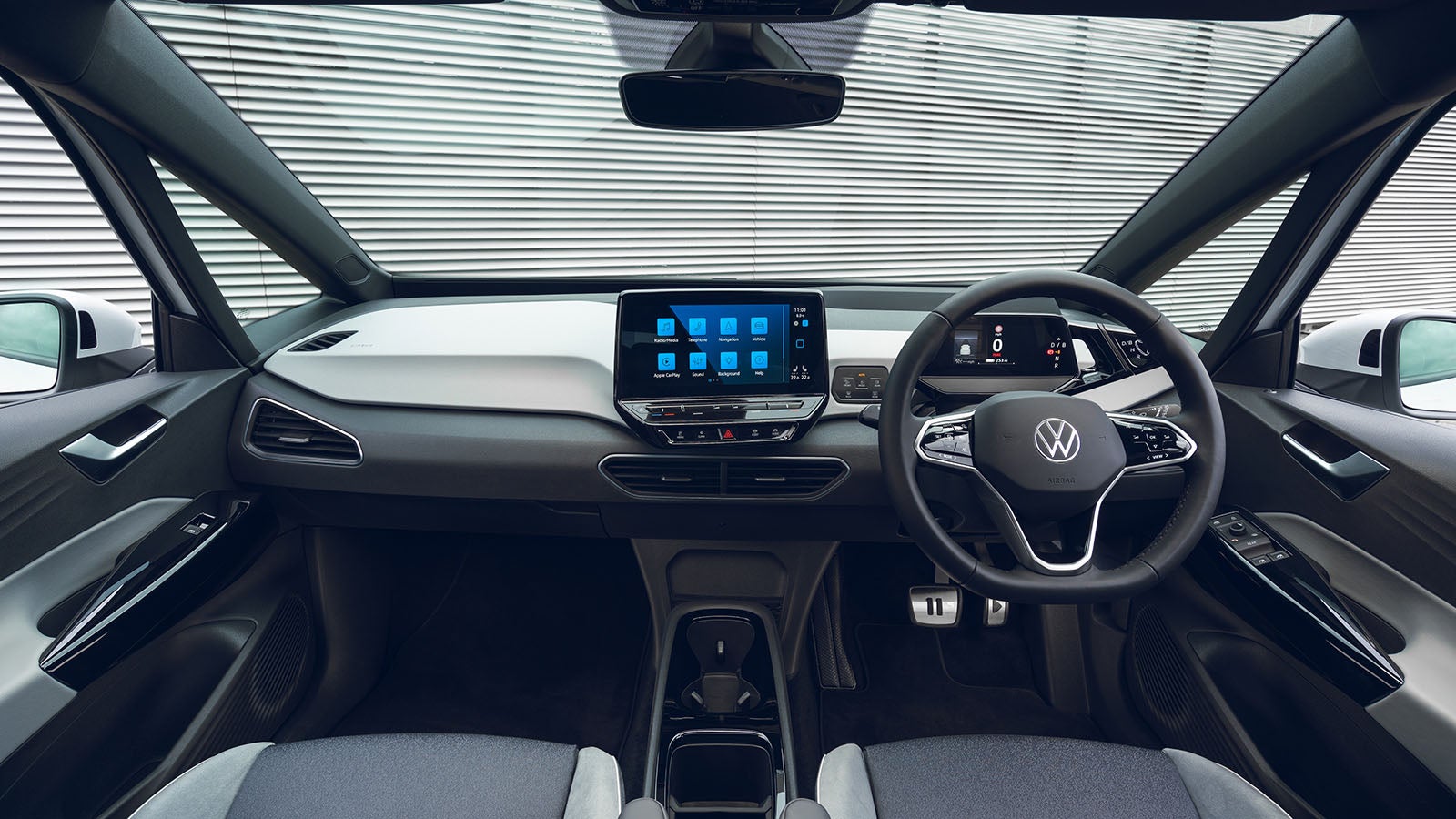
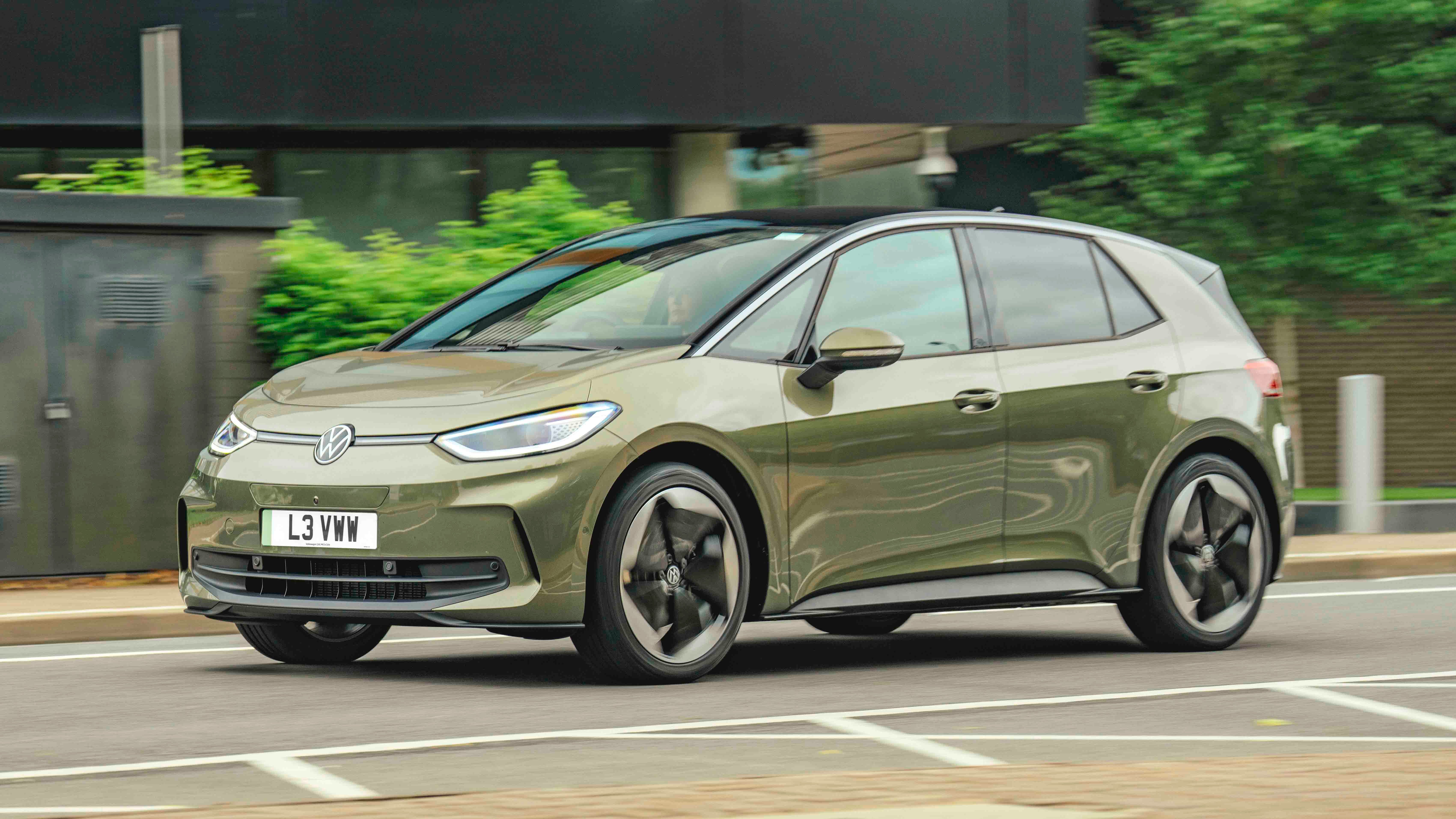


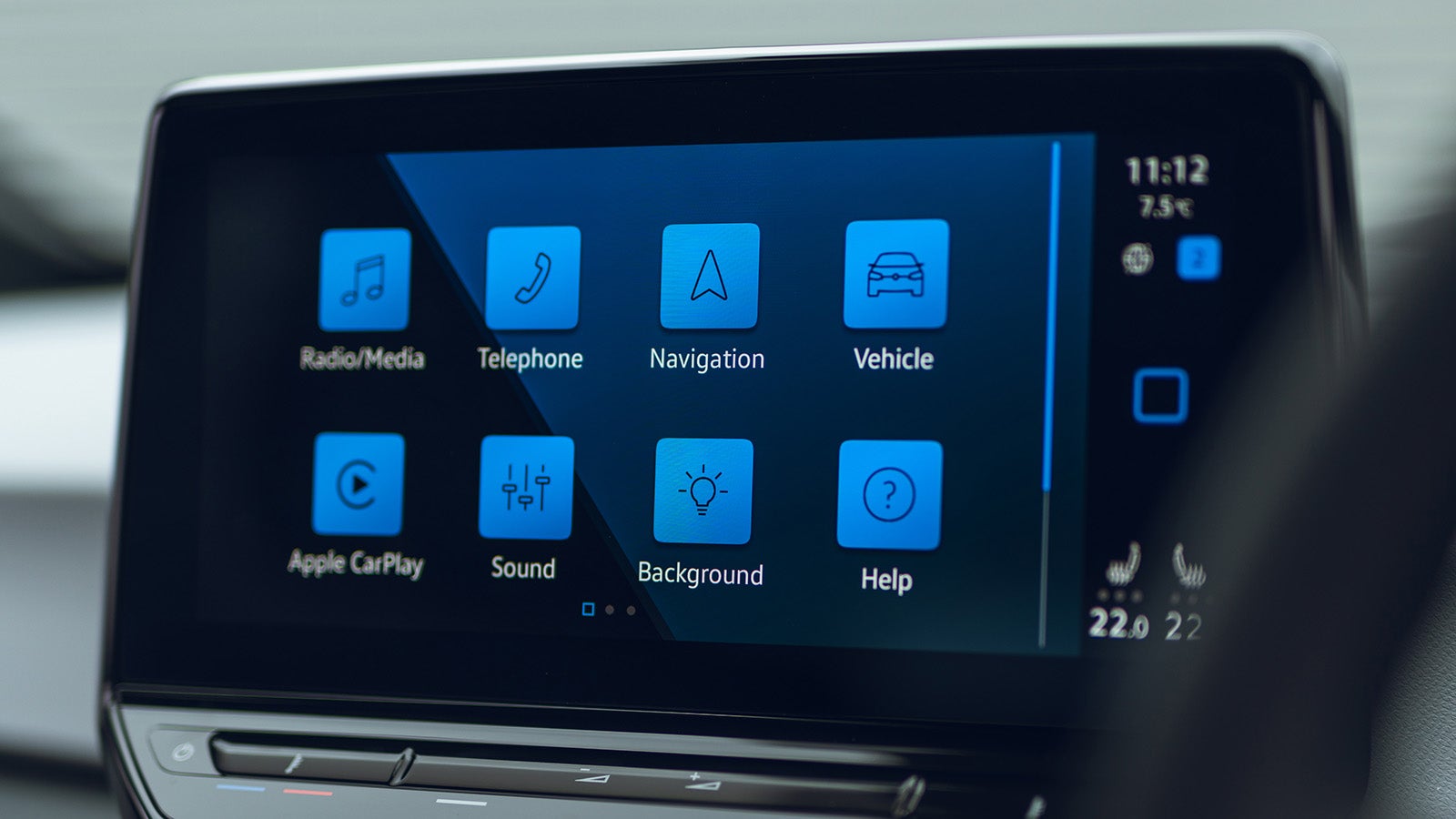
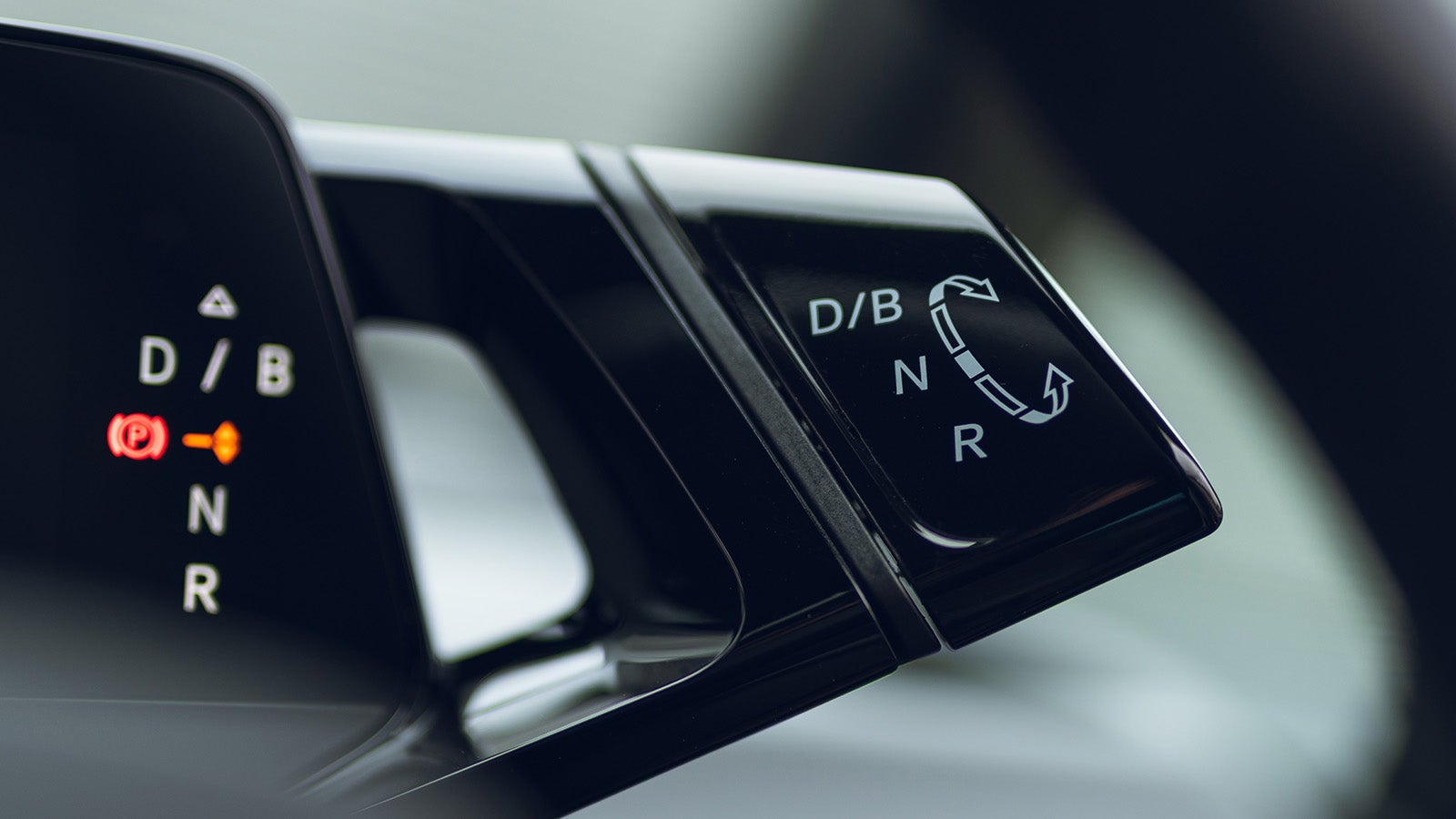

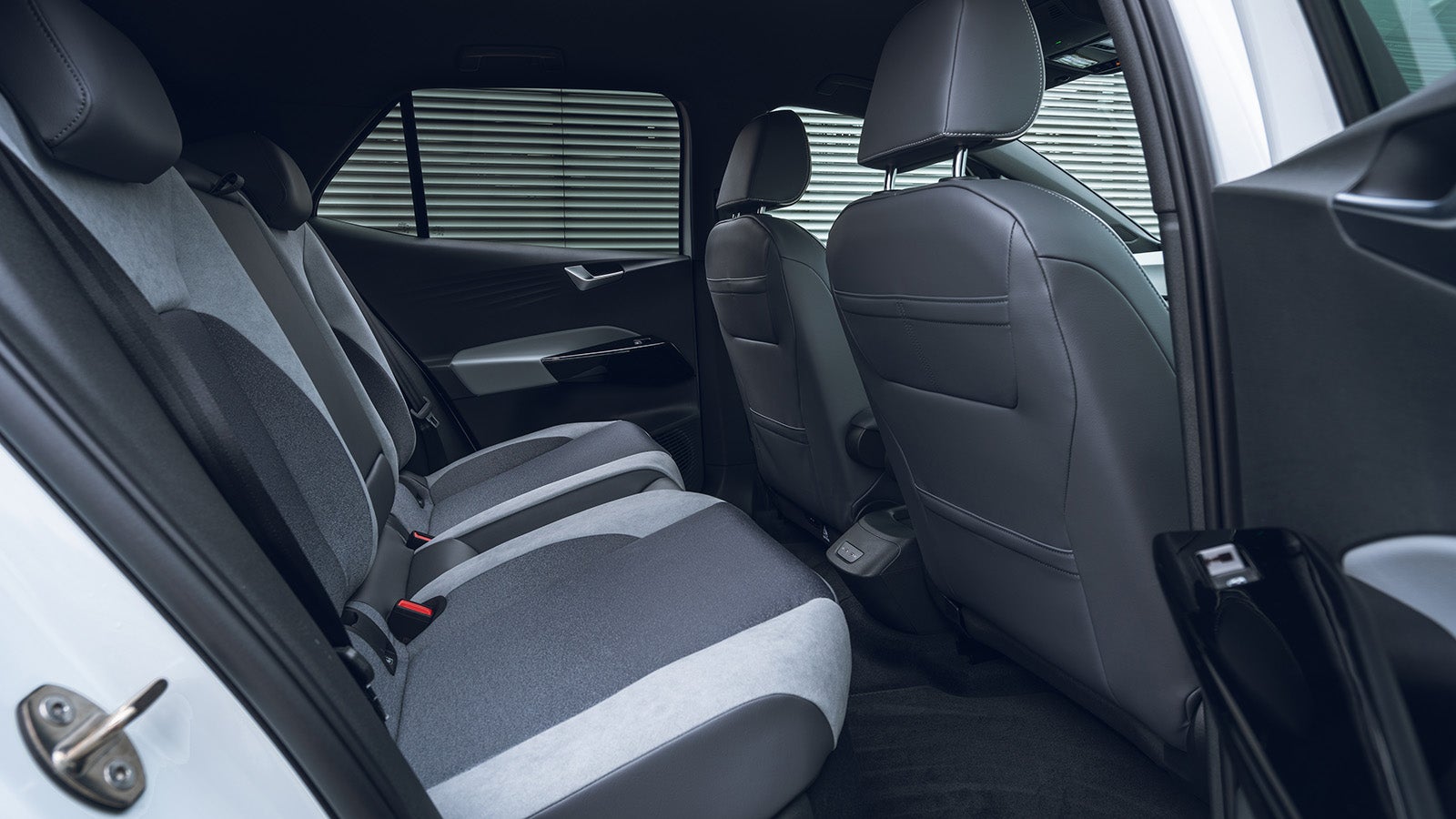
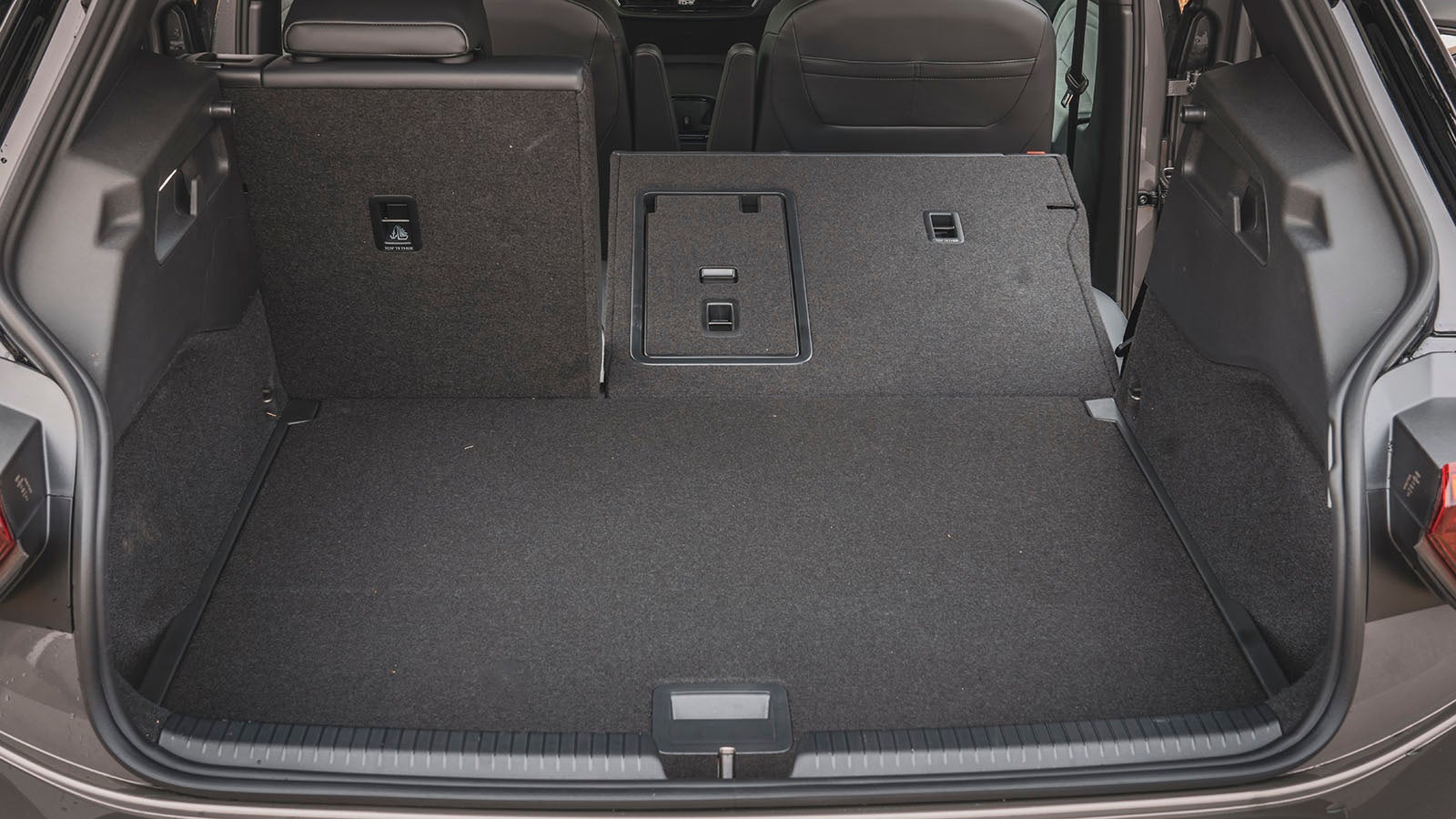
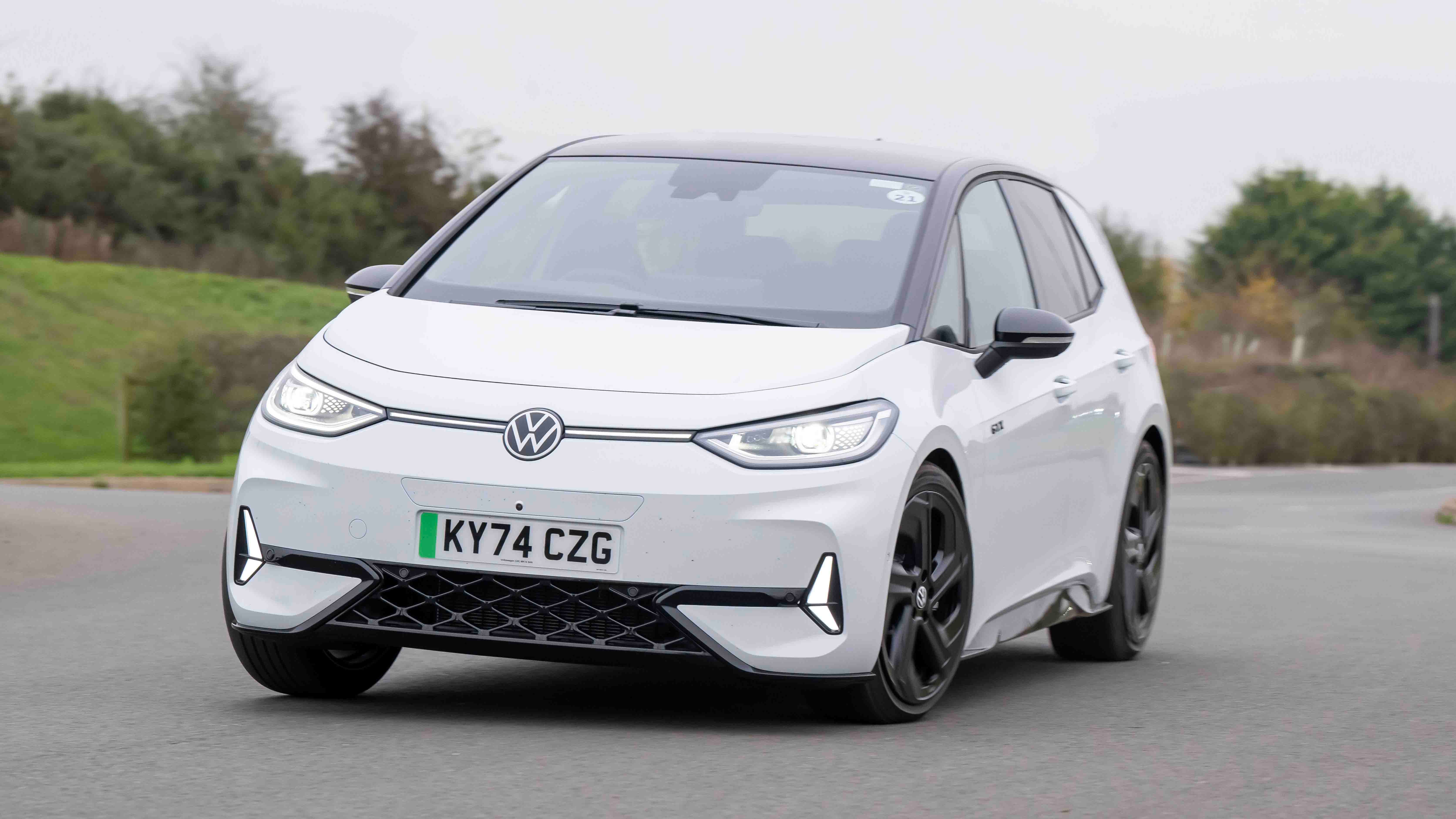
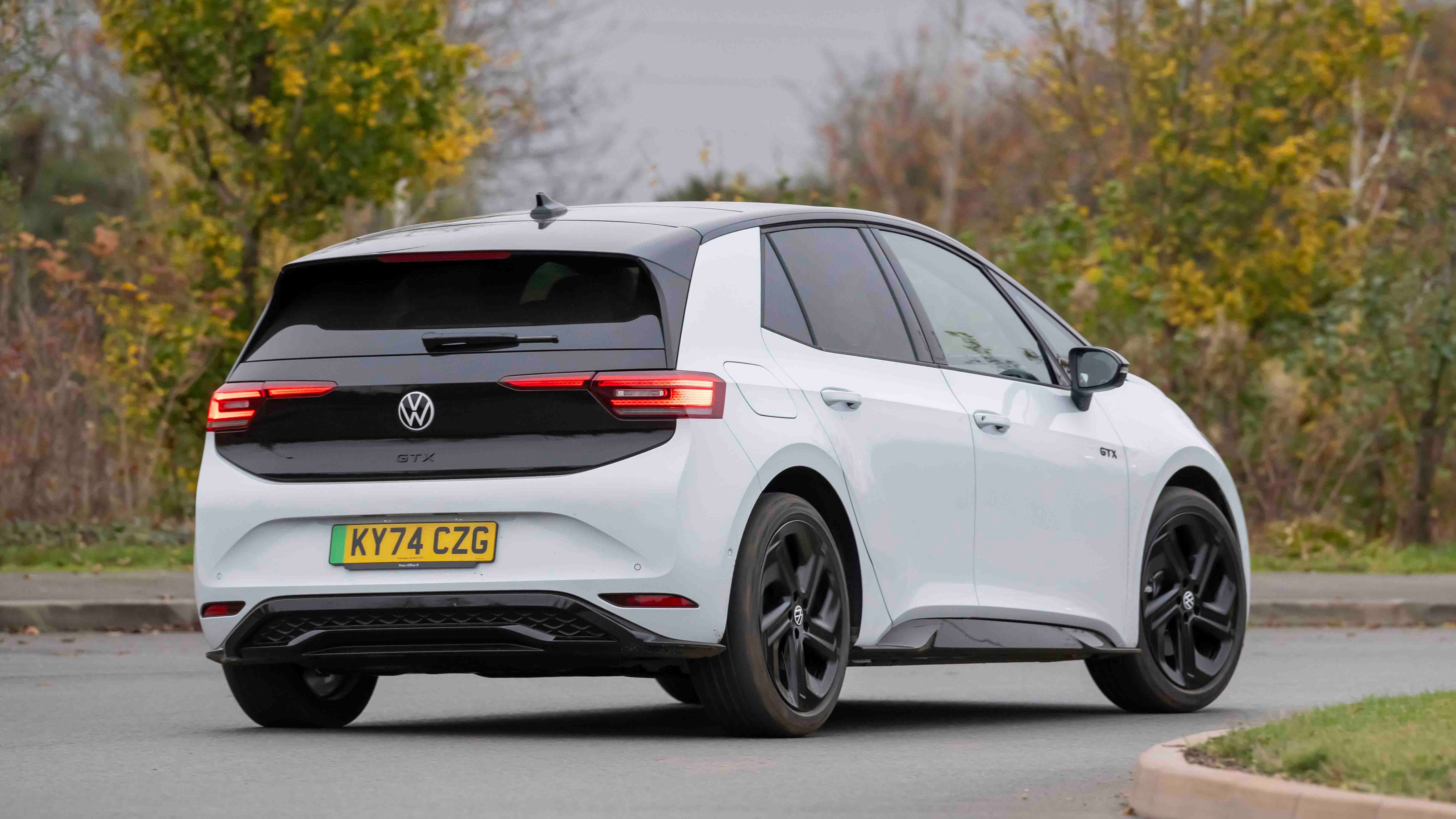
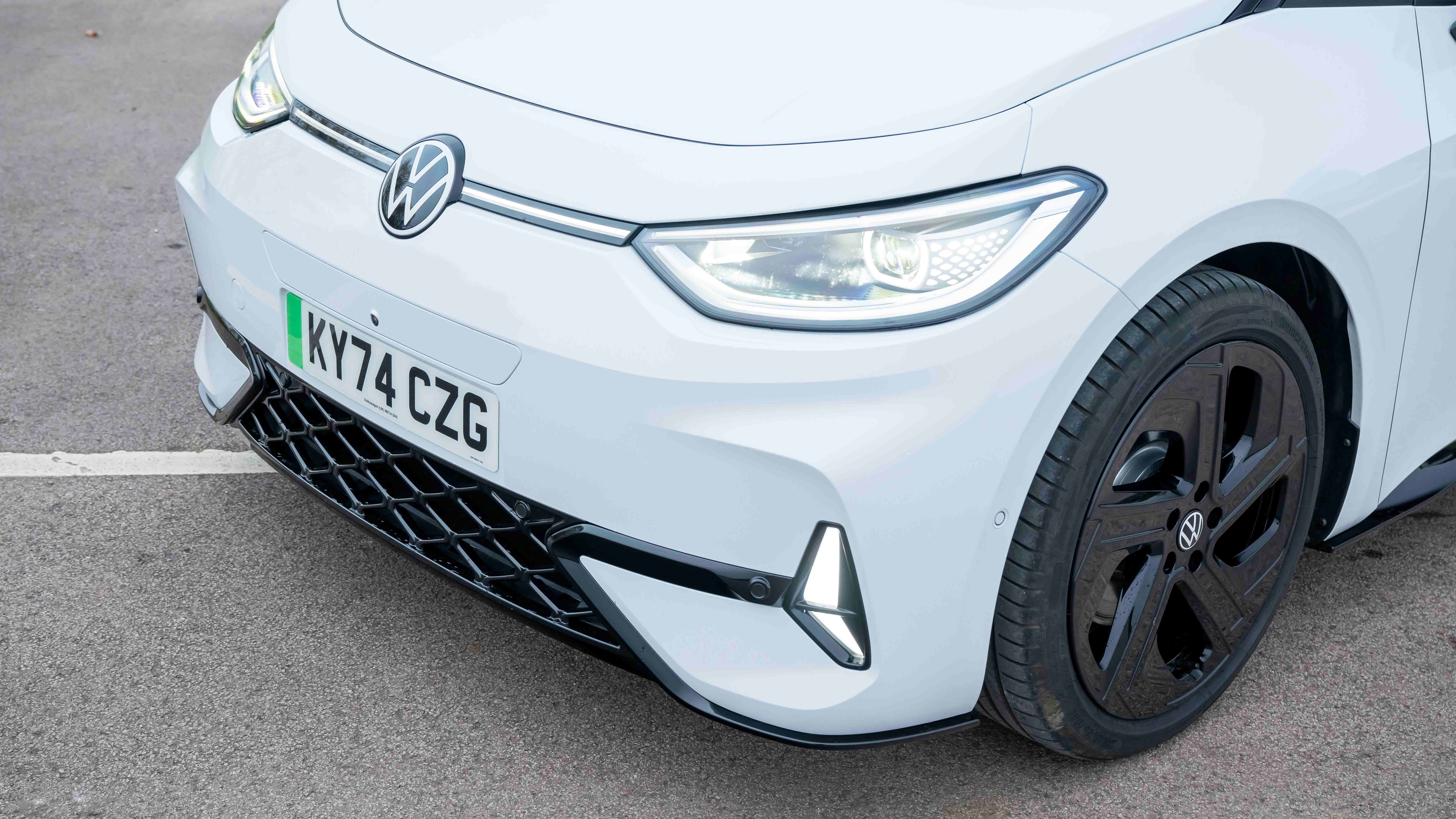
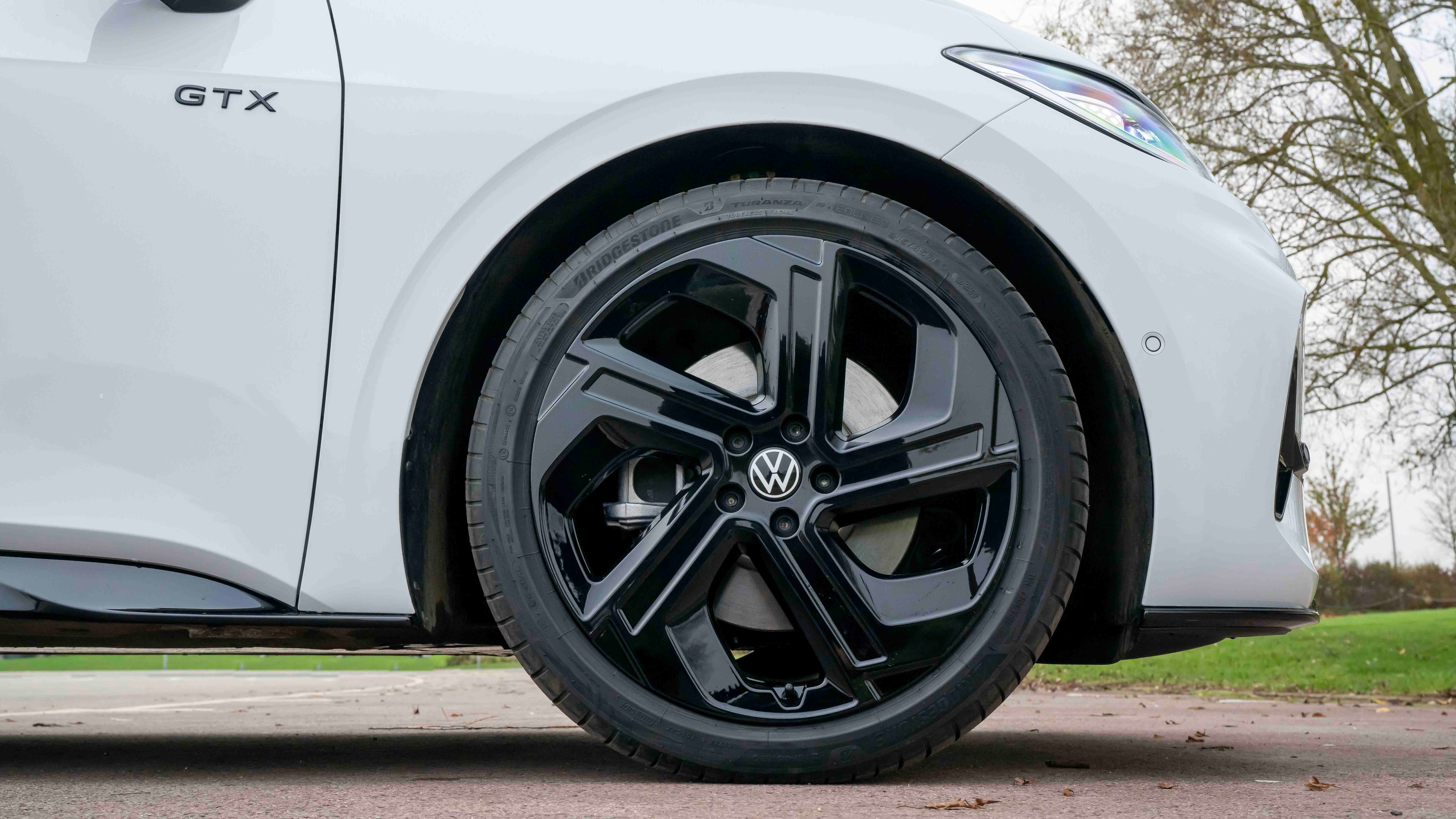
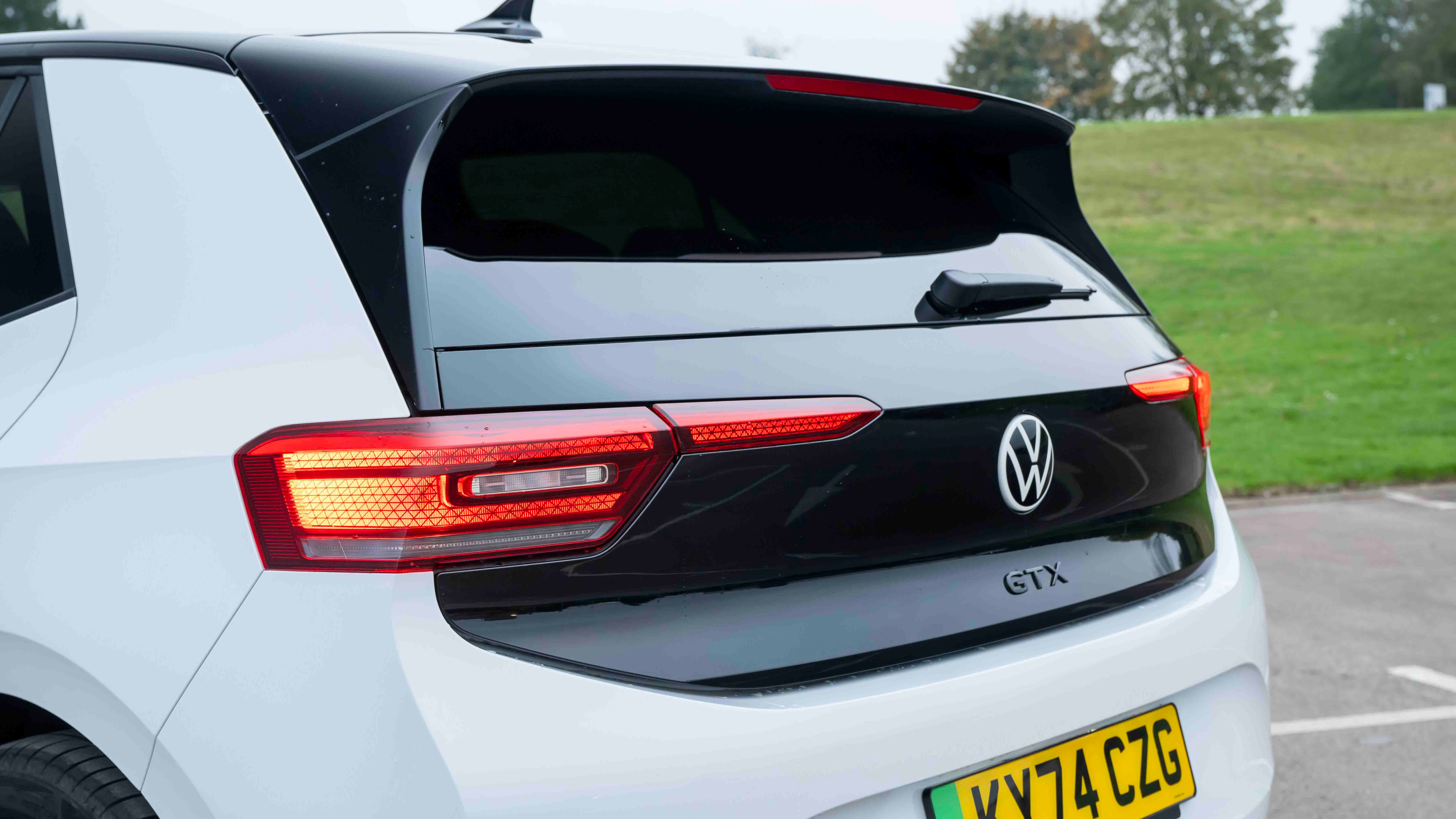
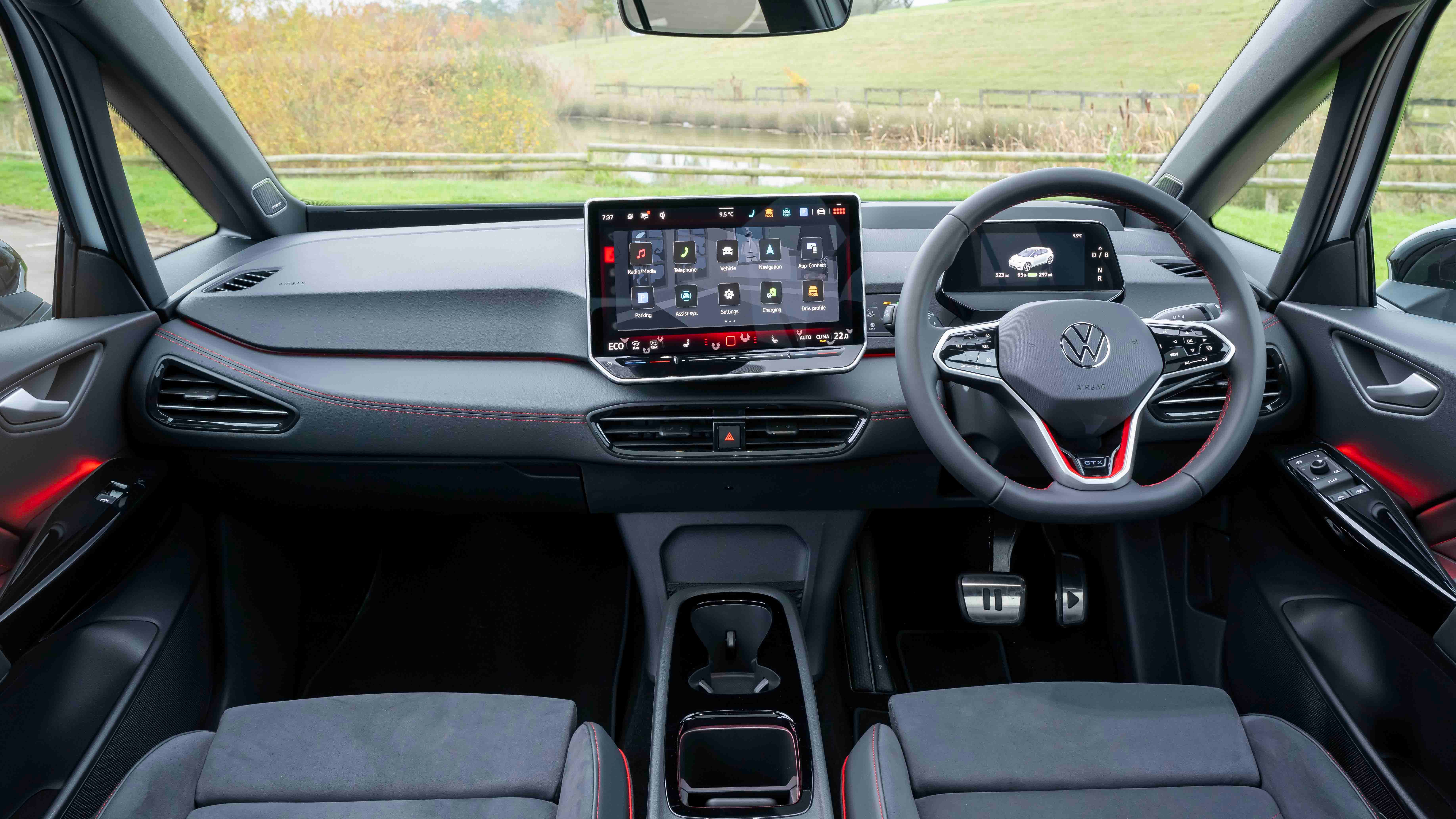

Volkswagen ID.3 Review

When Volkswagen first launched its ID.3 electric hatchback, the world collectively responded with a 'huh?'.
Now we've had time to get used to the ID.3's new look and technology – and with loads available on the used market – is it time to re-evaluate this compact family car? Keep reading to find out…
- Used ID.3s are cheaper than used Golfs
- Smooth, effortless EV driving experience
- Decent practicality for a hatchback
- Interior feels a bit spartan
- Infotainment system can be frustrating
- Don't expect driving thrills
Should I buy a Volkswagen ID.3?
Initial impressions of the ID.3 from reviewers when it first landed were a bit muted. The space, the technology and the battery-powered parts all worked well, but there were criticisms of the car's extremely minimalist cabin, which has removed almost every button and switch, and replaced them with a large touchscreen.
It didn't help, too, that new ID.3s were fairly expensive – costing more than an equivalent Volkswagen Golf. This made them a bit of a tough sell for anyone who didn't already have easy access to an EV charger.
However, as a used car, the ID.3 makes a lot more sense. We've found that battery-powered cars usually suffer fairly steep depreciation as soon as they drive away from the dealership but, once the first year's depreciation is out of the way, they tend to draw level with fuel-powered models and stay there. For more info, check out our explainer on electric car depreciation.

Looking at the ID.3, this means used examples are priced almost exactly in line with fuel-powered Golf models and, in some cases, actually undercut their engine-driven counterpart. This means used ID.3 buyers benefit from its electric acceleration, automatic gearbox and super-low running costs, all for the same price they'd pay if they'd chosen a more conventional Golf.
Plus, the ID.3 doesn't just appeal to your wallet. It's spacious and extremely easy to drive, with a comfortable ride and lots of room for passengers. And, while hot hatch buyers probably won't be queueing up to buy this compact EV, all models offer strong and smooth performance thanks to their electric motors.
Interior and technology

Take a seat in the ID.3's cabin and the initial impression is of a light, airy space. There's minimal intrusion from the dashboard, door panels and centre console, and there's lots of glass all around so natural light streams into the interior.
You'll eventually realise, however, that the airiness comes because Volkswagen has dramatically reduced the amount of interior fixtures and fittings you'd normally expect. There's basically nothing on the lower dashboard, and just a simple screen pod and a handful of touch-sensitive buttons on the upper part. Even the driver's window switches have been cut from four to just two, with a separate button to select whether the switches operate the front or back windows.
Life is the entry-level trim and, while it's fairly well equipped, its colour scheme – a mix of light and dark greys, plus the odd bit of gloss black – looks a little drab in practice. Higher-end ID.3s add nicer materials and, in the case of 1st Edition models, crisp white and bright colour-matched finishes that lift the cabin substantially. You might also spot funky aluminium pedals with 'pause' and 'play' icons on upper trim levels.
A much bigger potential stumbling block than the decor is the interior technology. Almost all the car's functions are now handled in the infotainment system, including climate control adjustment, vehicle settings and drive modes. We found most adjustments mean you have to take your eyes off the road briefly to spot and tap the desired option on screen, which we think is less intuitive than physical buttons.

There are touch-sensitive shortcuts below the screen pod but they don't lead to useful functions such as audio or navigation. Instead, Volkswagen has provided shortcuts to select your drive mode or adjust the car's safety and driver assist features – functions that you're unlikely to use that often. The driver assist menu, in particular, is also annoying because, rather than let the user see a simple menu of functions and adjustments, you have to tap on parts of a virtual on-screen ID.3 to adjust them, which is both cumbersome and unintuitive.
The screen continues to irritate when you decide to make a quick temperature or volume adjustment. Both of these can be manipulated using a touch-sensitive slider beneath the screen. This is already a bit fiddly as there's no haptic feedback to rely on, but it becomes effectively impossible at night because Volkswagen neglected to illuminate these controls, so they can't be seen in the dark. Newer ID models have rectified this oversight but that update is missing from the ID.3 sadly.
We were also less than impressed by the look and feel of the ID.3's infotainment software. It's annoying that there aren't persistent buttons to jump between functions and, instead, you have to tap back to the home menu before tapping into the function you actually want. The graphics are generally quite fussy, with lots of different colours, icons and fonts used all over the place, making it hard to pick out the most important info at a glance. The same issue affects the small driver's screen, which tries to pack far too much into a tiny space, making it hard to pull out the relevant info.
We should highlight a couple of small caveats to our complaints above. Firstly, despite the irritations, you will eventually get used to the system and – especially once you've abandoned Volkswagen's native software for the built-in Apple CarPlay and Android Auto – you'll find it easy to use just the features you care about. Secondly, Volkswagen put out a big update in 2023 that saw a new, larger screen fitted to the ID.3 with sharper, clearer software that addresses some of the issues highlighted here.
Practicality

The ID.3's 4.3-metre footprint is essentially the same as the Golf's. Its body is a few millimetres shorter, a fraction wider and a little taller. And, if you're expecting a similar amount of room… you'd be right.
Four tall adults will fit in the ID.3's cabin – just like its petrol-powered sibling – but they'll find they have almost no spare space to lounge about. If you're often carrying rear passengers, you might be better off with cars like the Tesla Model 3, Hyundai Ioniq 5 or VW's own ID.4.
Like all family hatchbacks, the centre-rear-seat passenger will feel cramped and find their elbows bumping against their neighbours. They'll also find their headroom is pretty limited as they sit higher up than the outer two seats, but foot space isn't too bad thanks to the car's flat floor.

Some EVs see under-floor boot space robbed by their battery pack, but the ID.3's cargo area doesn't suffer this issue. The 385-litre luggage space is five larger than the Golf's boot and is a very similar shape in practice. That means it can swallow a smaller pushchair or a couple of big suitcases. Cars equipped with the optional 'Comfort Pack Plus', which is standard on ID.3s in Family trim, get a variable height boot floor, which eliminates the lip when the rear seats are folded and gives you a handy separate under-floor storage space.
Engines and performance

There are a handful of different motor and battery combinations available for the ID.3 but our Pro Performance model includes, by far, the most common setup. This pairs a 150kW (204hp) electric motor on the rear axle with a 58kWh battery pack.
That means zippy acceleration, dashing from 0-62mph in 7.3 seconds and a claimed 264 miles of range. We reckon a real-world figure above 200 miles should be achievable. Like all its rivals, the ID.3's 58kWh pack can fully recharge overnight from a 7kW home charging point. If you're taking a longer journey, it can DC fast charge at up to 120kW, giving a 0-80% charge in as little as 35 minutes.
This setup feels just right for the ID.3. Just a bit of weight on the accelerator delivers smooth, swift and silent acceleration. It won't slam your head into the headrest like a Tesla but it always feels like there's lots of power under your foot available the instant you want to jump into a gap in traffic.

The insistent force from the motor will carry you all the way to fast motorway speeds without any sense that it's running out of puff. And, once you reach cruising speed, you'll only hear a bit of roar from the tyres and the faintest of wind whistles – it's noticeably quieter than cars like the Model 3.
Less common are the Pure Performance and Pro models, which come with a slightly less powerful 110kW (150hp) motor. The former uses a smaller 45kWh battery pack for a claimed 216-mile range, while the latter uses the mid-range 58kWh pack, again with 264 miles of range. Above them sit Pro S versions with a large 77kWh pack, boosting claimed range to 341 miles.
For 2024, Volkswagen launched new ID.3 GTX variants. These feature a large 79kWh battery with a claimed 370-mile range, as well as upgraded 175kW fast charging which brings the 0-80% time below 30 minutes. Standard GTX models get a 273hp motor and a six-second 0-62mph time, while GTX Performance versions get 326hp for a 5.6-second time – both fast enough to hassle their Golf GTI hot hatch cousin.
Driving and comfort

Despite the ID.3's decent performance, it doesn't feel like a car that's been set up for sporty driving. There's an obvious softness to the suspension and a little more bounce than you might expect – probably because the springs need to be burly enough to carry the heavy battery pack.
As a result, aggressive inputs on the steering wheel or sudden direction changes can see the car's body tip over to the outside of the corner – an effect that's subtly amplified by the fact you sit a little higher up above the battery pack than in a fuel-powered car. This means the ID.3 can't really replicate the kind of keen turn-in you'll find in sporty cars like the Golf GTI, despite not being too far off in outright acceleration.
None of that really matters too much, however, because the ID.3 has been designed for comfortable cruising. The controls are light, visibility is excellent and the suspension cushions most road impacts very well. There's also an impressive absence of noise on the move, especially at lower speeds where the motor whisks you off from a standstill with barely a whisper.
You can adjust the level of regenerative braking on the column-mounted gear selector, with a choice of regular 'D' mode or 'B' which offers much more stopping power. It won't quite one-pedal drive, however, so you'll still need to prod the regular brakes to fully stop the car. Some drivers might like a little more control over the regen level, but we appreciate the simplicity of having just two settings – preferring 'B' around down and 'D' on the motorway to enable easier coasting.
























































